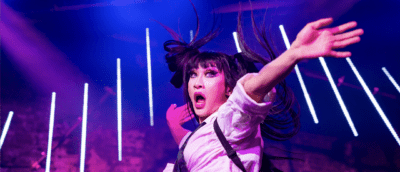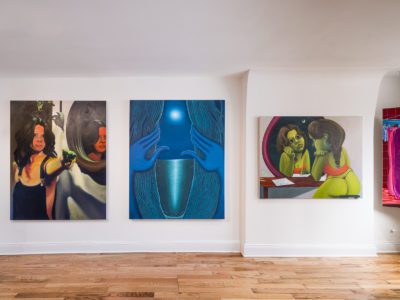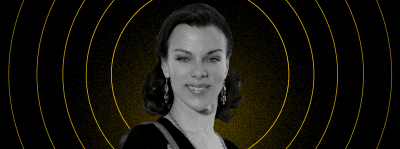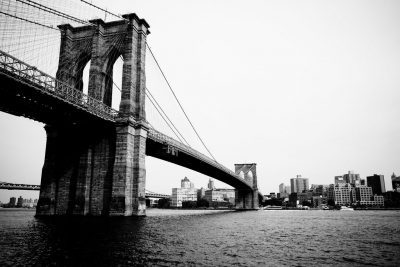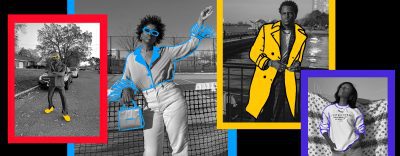Westbay’s work at Gallery23 (Courtesy John Westbay)
John Westbay: From Marine Park with love
The South Brooklyn barber who went from graffiti to fine art is now also a streetwear brand
John Westbay got his start in the fine art world like many before him did: illegally. A decade since he began spray painting uplifting murals throughout Marine Park, Westbay, 32, is in galleries all over the world — from New York City to Dubai. He owes it all, he says, to South Brooklyn.
When I met Westbay for coffee in Dumbo a few weeks ago, he asked me a question before I could get a word in. He wanted to know what kind of coffee I ordered so he could order the same and try it. He ordered the same iced vanilla latte (with oat milk)— because, he figured, “why not try it?” This is the exact sentiment that got Westbay where he is today.
From his guerilla-style street art days on to mainstream gallery exhibitions and a new website, With Love By West, Westbay has stayed true to his expansive eye-catching color palette and contagious positivity. And he’s still asking “why not try it?”
During his days as the anonymous Love Vandal, Westbay was notorious for his LOVE tags; now, his cartoonish heart with oversized eyes remains a trademark, present in most of his creations. Soon all of his work not currently on display will have a home in his new Soho studio loft. And now, Westbay is joining forces with John Scafiddi, another Marine Park local and founder of streetwear brand, At War, in the clothing collaboration, Love and War.

Westbay and a friend
Why not try art?
In 2013, during a routine Marine Park hangout, Westbay noticed one of his friends had picked up painting “I thought, ‘This is so cool, why am I not doing it?’,” he says. “So I went to Blick, had no idea what to get, and so I got basic paints and little canvases and started.” A self-described creative child (his elementary school teachers would always snatch away his mid-class scribbles — but not before complimenting them first), Westbay had no formal training. He started watching videos and familiarizing himself with color theory and composition.
In fact, there was a notable lack of creative energy where Westbay grew up, he says. His parents both worked blue collar jobs; his father was a truck driver, his mother worked for the school district. Westbay himself started out as a barber in Marine Park, which was a creative enough professional outlet. In 2010, Westbay opened his own barbershop, which he owned until 2013, and operated until the pandemic hit.
“Everyone knew who Westbay was,” says his pal Scafiddi, founder of the New York/Los Angeles based streetwear brand At War. “Not even because he was doing graffiti and slapping his logo everywhere, but because he was a barber — probably the best in South Brooklyn.”
After gathering up the essential materials Westbay took his basic self-taught techniques to the streets. He spray painted messages such as “Believe in Love” and “Love Heals.” The tags got attention, prompting him to make an Instagram page for his work, while remaining anonymous. His work got written up in The New York Daily News and The Brooklyn Paper, and eventually, people began messaging him on Instagram inquiring about commissioning work. He had no idea what to charge. This was never the plan.
It was another Marine Park friend, Keith Gill, who suggested Westbay move into the fine art space. Gill, 45, and Westbay were not friends growing up. “I was always friends with Westbay’s brother. And when our friend passed away, Westbay reached out to me right away,” Gill explains. “And then a few years later, I went through some tough shit down in Florida, and Westbay was there for me. John felt, I guess, a little bit of an allegiance to a guy from a neighborhood that was struggling.”
Gill provided Westbay with some of the financial backing he needed, and Westbay himself had also saved up ample money from the barbershop. The once-anonymous Love Vandal revealed himself, learned how to appraise his work, and used his Instagram as an outlet for business.
Today Westbay’s work typically sells for anywhere between $2,000 and $12,000. But if he doesn’t want to sell it, he won’t. Gill remembers a few years back when Westbay painted a 6×6 Victor Castillo-inspired canvas of Bugs Bunny as a gift. Westbay featured the piece in an early exhibit just to widen his showcase, not expecting anyone to buy it. “People were offering him $15,000, even $16,000 for it. He wouldn’t take it. I kept telling him he was crazy,” Gill remembers.
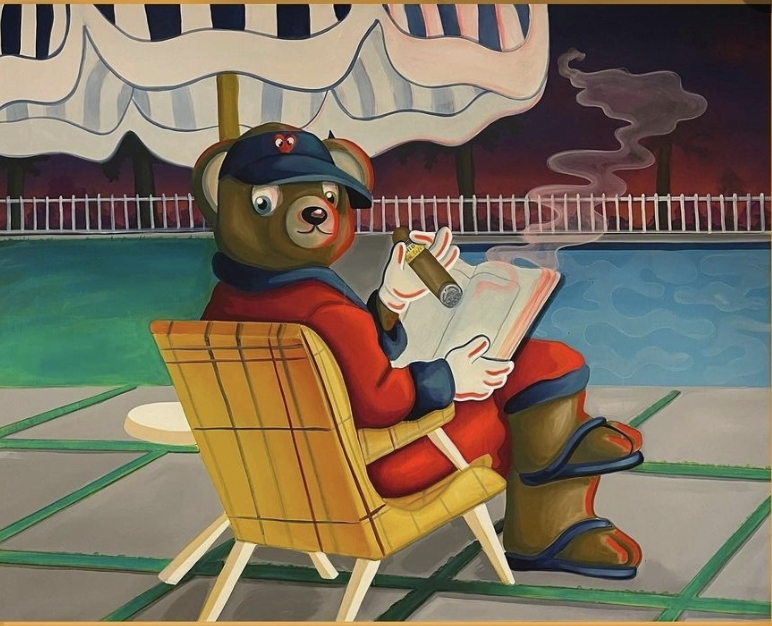

The painting he never sold
Why not give back?
Yet even in his new role in the high art space, Westbay remains grounded. His assistant Su Barakin asserts she’s seen nothing but authenticity from the artist. “When someone pays you, you often see ego. With John, I haven’t seen any.” Gill works at a nonprofit that works to provide financial assistance to underprivileged schools. Last month, Westbay traveled to Boston to volunteer teaching free art classes to students. “He actually said, ‘I’ve been wanting to do this’,” Gill says. “He feels he needs balance in painting for profit and giving back.”
Westbay’s work features bright color and bold shapes, usually cartoonish, oversized hearts; He cites Takashi Murakami and Shepard Fairey as key inspirations, in addition to Vincent Van Gogh. Westbay has an intricately detailed Van Gogh painting of a skeleton on his left forearm.
He is inspired, he says, by New York City and believes his art “wouldn’t be the same” had he lived elsewhere. Still, he would love to spend time in a more relaxed environment like San Diego or upstate New York. Westbay’s studio in Soho, where he can stay up as late as he wants painting — a habit he’s trying to fix — will be complete next month; that’s what’s keeping him here full time for now.
“I’m always looking at things being here in the city… and I think it’s visible in my work,” he tells me. “The color, the character, even the different shapes and sizes of things, it’s very representative of New York.” But that doesn’t mean that it appeals to everyone in New York. “Where I’m from, my friends I have from childhood, they don’t get it. But it doesn’t bother me. I actually get kinda happy when I hear that because that tells me I’m doing something good.” But even still, every art show and every gallery exhibition he’s had has been packed with Westbay’s Marine Park crew.
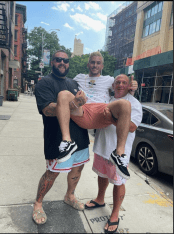

From left: Scafiddi, Westbay and Gill
Why not try War?
Scafiddi gets it. Despite some initial resistance from Westbay, the At War founder sold him on the idea of a potential collaboration in February of 2020. “I said ‘you have love and I have war, which I know sounds like it doesn’t make sense because they’re complete opposites, but they’re also like peanut butter and jelly’,” Scafiddi recalls. “All is fair in love and war,”
The two released their first drop in July 2020; the duo released 75 t-shirts that sold out in one hour. A few months later, they dropped 150 pieces that sold out the same day. In September 2021, Love and War released an entire collection of hoodies, crewnecks and t-shirts, and in 2022, they added basketball shorts to the suite and became a full-fledged brand in their own right. Love and War places Westbay’s “Love” and Scafiddi’s “At War” at play in the same pieces; some feature Westbay’s signature heart figurine, while others remain simple in design, drawing influence from streetwear brands such as Eric Emanuel and Off White.
Both Johns tell me that they “just clicked.” Westbay designs and Scafiddi manufactures.
“I was reluctant to get into clothing. I was worried it would stifle my growth into the fine art market,” he tells me. “That’s why these guys like Murakami and Shepard Fairey are so important because they’ve blurred these lines and removed these boundaries between fine and commercial art.”
In a way, it makes sense why Westbay couldn’t explain to me what drove him to get started. Everything with Westbay is just natural: his relationships, his inspirations, and his work. He is still nostalgic for his days as a barber. “I miss the people aspect of it,” he tells me, “I miss the community.” But the artist is creating his own, as he plans to expand both his personal collection and Love and War to a larger audience — and in an accessible way.
But not too accessible. “We want to spread our message,” Scafiddi says. “But we don’t want to appease everybody, because then you appeal to nobody. We want to be able to bring a community of like-minded people together.”
You might also like 

















